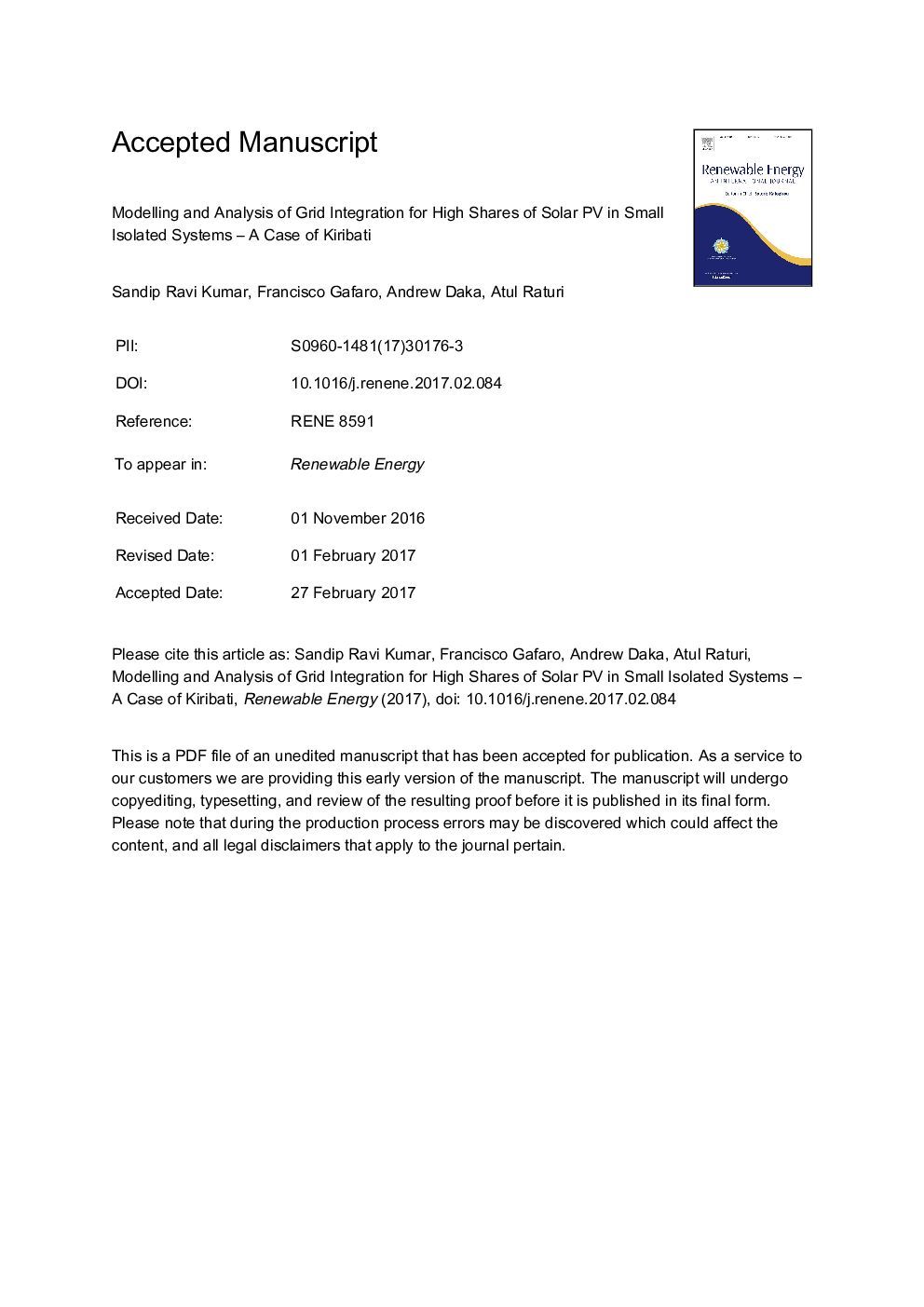| Article ID | Journal | Published Year | Pages | File Type |
|---|---|---|---|---|
| 4926538 | Renewable Energy | 2017 | 20 Pages |
Abstract
Kiribati, a Pacific Island Country, is striving for high solar PV electricity into national grid in order to reduce its unsustainable dependence on imported fossil fuel. This, however, can pose technical challenges on the reliable operation of the small isolated system. In this work, a technical analysis was carried out to investigate the implications of the planned pipeline of grid connected PV systems on Kiribati's Tarawa power system. Variations in PV output and corresponding spinning reserve requirements to balance the short fall in the power output were analysed. The utility network was modelled using the PowerFactory software. Steady state and dynamic analyses were then carried out for the simulated scenarios. There were no major concerns identified at times of high load with high PV output. For low system demand with high PV output, dispatch constraints were identified. The current grid system will sustain maximum PV capacity above a load of 3250Â kW but will require curtailment below this load. Dynamic simulations showed that fast negative ramps in the PV output can lead to frequency instability during a time of low demand and maximum PV output. The system is stable with PV curtailed at 900Â kW if low loads and maximum PV output conditions exist.
Keywords
Related Topics
Physical Sciences and Engineering
Energy
Renewable Energy, Sustainability and the Environment
Authors
Sandip Ravi Kumar, Francisco Gafaro, Andrew Daka, Atul Raturi,
